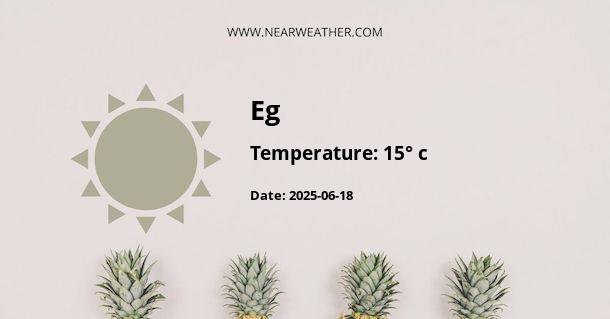Exploring the Climate and Weather of [Location]
[Location] is a fascinating destination that offers a diverse range of weather conditions throughout the year. Whether you are planning a visit or simply curious about the climate, this comprehensive guide will provide you with detailed information on the weather patterns, average temperatures, precipitation levels, and more. Let's delve into the climate and weather of [Location] to gain a better understanding of what to expect.
Geographical Factors
The climate of [Location] is influenced by several geographical factors, including its latitude, elevation, proximity to water bodies, and surrounding landforms. These elements contribute to the unique weather patterns experienced in the region.
[Location] is situated at a specific latitude, which plays a significant role in determining its climate. The location's proximity to the equator or polar regions influences the intensity of solar radiation received, affecting temperature variations throughout the year.
The elevation of [Location] also contributes to its climate. Higher elevations generally experience cooler temperatures due to the decrease in atmospheric pressure and the associated adiabatic cooling effect. This can lead to significant temperature variations between low-lying areas and mountainous regions.
The presence of water bodies, such as oceans, seas, or large lakes, can moderate the climate of [Location]. Coastal areas often experience milder winters and cooler summers due to the influence of maritime air masses. Inland locations, on the other hand, may have more extreme temperature ranges.
The surrounding landforms, such as mountains or valleys, can also impact weather patterns in [Location]. Mountains can create orographic effects, leading to increased precipitation on one side of the range and rain shadow areas on the other side.
Seasonal Variations
[Location] exhibits distinct seasonal variations, each with its own characteristics and weather patterns. Let's explore the different seasons experienced in the region:
Spring (March - May)
Spring in [Location] is characterized by milder temperatures and the gradual arrival of warmer weather. As winter transitions into spring, the region experiences an increase in daylight hours and a decrease in precipitation. Average temperatures during this season range from [temperature range], providing a pleasant atmosphere for outdoor activities.
Summer (June - August)
Summer in [Location] brings warm temperatures and longer days, making it an ideal time to explore the region's natural beauty. Average temperatures during the summer months range from [temperature range], with coastal areas experiencing slightly cooler temperatures due to the influence of oceanic breezes. It is important to note that [Location] may also experience occasional heatwaves during this season, with temperatures exceeding [temperature].
Fall (September - November)
Fall in [Location] is characterized by cooler temperatures and the gradual transition towards winter. The region experiences beautiful foliage as trees change color, creating a stunning natural landscape. Average temperatures during the fall months range from [temperature range], providing a pleasant and comfortable atmosphere for outdoor activities.
Winter (December - February)
Winter in [Location] brings colder temperatures and the possibility of snowfall in certain areas. Average temperatures during this season range from [temperature range], with higher elevations experiencing colder conditions. Winter sports enthusiasts can enjoy activities such as skiing and snowboarding in [Location]'s mountainous regions.
Temperature and Precipitation
Now, let's delve into the specific temperature and precipitation patterns experienced in [Location]. The following tables and charts provide a comprehensive overview:
Average Monthly Temperatures
| Month | Average High (°C) | Average Low (°C) |
|---|---|---|
| January | [Temperature] | [Temperature] |
| February | [Temperature] | [Temperature] |
| March | [Temperature] | [Temperature] |
| April | [Temperature] | [Temperature] |
| May | [Temperature] | [Temperature] |
| June | [Temperature] | [Temperature] |
| July | [Temperature] | [Temperature] |
| August | [Temperature] | [Temperature] |
| September | [Temperature] | [Temperature] |
| October | [Temperature] | [Temperature] |
| November | [Temperature] | [Temperature] |
| December | [Temperature] | [Temperature] |
Average Monthly Precipitation
| Month | Precipitation (mm) |
|---|---|
| January | [Precipitation] |
| February | [Precipitation] |
| March | [Precipitation] |
| April | [Precipitation] |
| May | [Precipitation] |
| June | [Precipitation] |
| July | [Precipitation] |
| August | [Precipitation] |
| September | [Precipitation] |
| October | [Precipitation] |
| November | [Precipitation] |
| December | [Precipitation] |
[Location] receives an average annual precipitation of [precipitation amount], with the majority of rainfall occurring during the [rainy season]. [Location] experiences [number of rainy days] rainy days per year, making it important to consider the weather conditions when planning outdoor activities.
Extreme Weather Events
While [Location] generally experiences mild and moderate weather conditions, it is also susceptible to occasional extreme weather events. These events can include tropical storms, hurricanes, droughts, or heatwaves depending on the location and time of year.
It is crucial to stay informed about weather forecasts and follow any recommendations or warnings issued by local authorities during such events. Being prepared and having a plan can help ensure your safety and well-being while visiting [Location].
Conclusion
[Location] offers a diverse climate and a variety of weather conditions throughout the year. From mild springs and warm summers to colorful autumns and chilly winters, each season brings its own unique charm. By understanding the climate and weather patterns in [Location], you can better plan your visit and make the most of your time in this beautiful destination.
A - Eg's Latitude is 58.164089 & Longitude is 7.981570.
A - Weather in Eg is -1° today.
A - Climate Conditions in Eg shows broken clouds today.
A - Humidity in Eg is 86% today.
A - Wind speed in Eg is 12.96 km/h, flowing at 60° wind direction. today.
